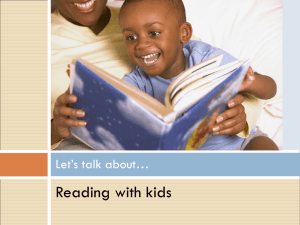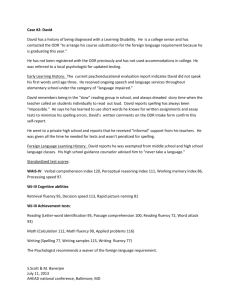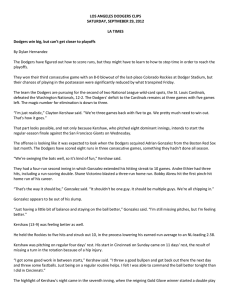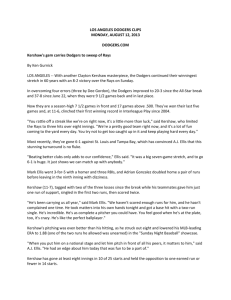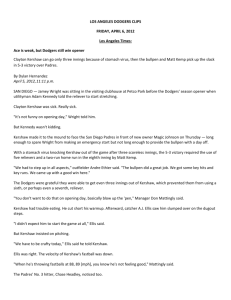lessonplan#3
advertisement
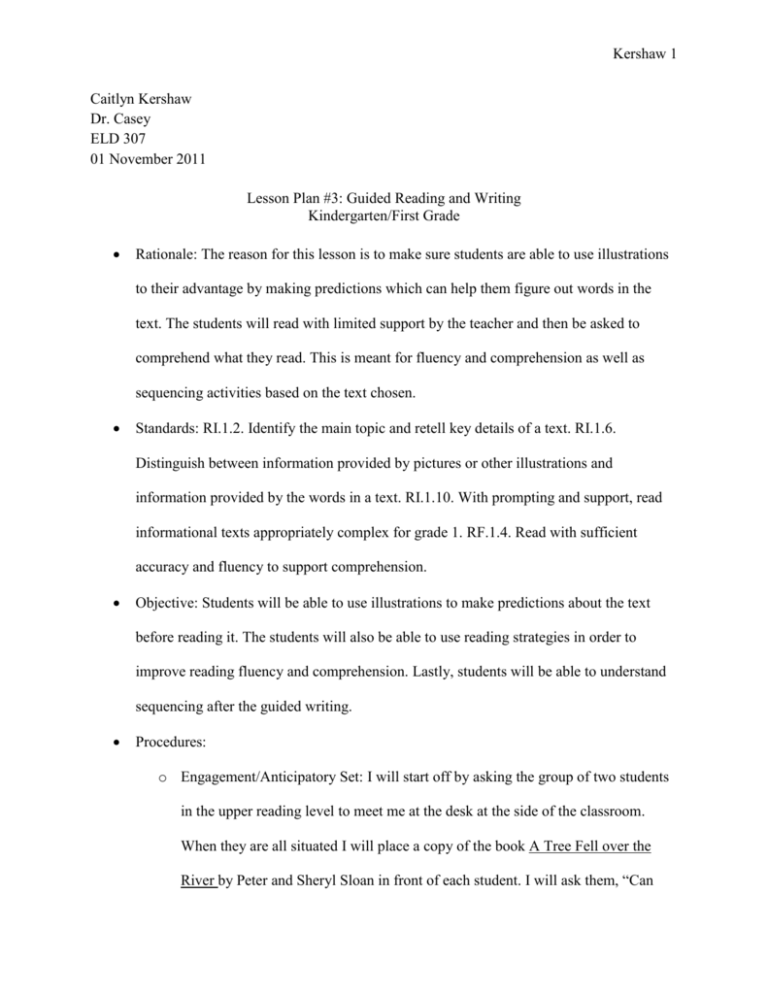
Kershaw 1 Caitlyn Kershaw Dr. Casey ELD 307 01 November 2011 Lesson Plan #3: Guided Reading and Writing Kindergarten/First Grade Rationale: The reason for this lesson is to make sure students are able to use illustrations to their advantage by making predictions which can help them figure out words in the text. The students will read with limited support by the teacher and then be asked to comprehend what they read. This is meant for fluency and comprehension as well as sequencing activities based on the text chosen. Standards: RI.1.2. Identify the main topic and retell key details of a text. RI.1.6. Distinguish between information provided by pictures or other illustrations and information provided by the words in a text. RI.1.10. With prompting and support, read informational texts appropriately complex for grade 1. RF.1.4. Read with sufficient accuracy and fluency to support comprehension. Objective: Students will be able to use illustrations to make predictions about the text before reading it. The students will also be able to use reading strategies in order to improve reading fluency and comprehension. Lastly, students will be able to understand sequencing after the guided writing. Procedures: o Engagement/Anticipatory Set: I will start off by asking the group of two students in the upper reading level to meet me at the desk at the side of the classroom. When they are all situated I will place a copy of the book A Tree Fell over the River by Peter and Sheryl Sloan in front of each student. I will ask them, “Can Kershaw 2 anyone look at the picture and tell me what this story may be about?” From the picture they could come up with different ideas such as a winter scene, a deer, the woods, or a river. Then I will ask what the title of the book is and discuss what the title could say about what is going to happen in the story. I will then use the cover illustration and title and try to tie them together for the students. The picture has a deer walking over the tree that fell over a river, so I will ask how the deer is walking across the river if no one can put the two ideas together quite yet. o Teach and Model: After discussing the title page and trying to use predictions, I will ask the students to open up to the first page as we do a picture walk. The first page is a picture of a tree that fell over a river; the next is a mouse walking across the tree, then a chipmunk, next a skunk, a deer, a wolf, and lastly a bear. The students should be able to determine what animals are walking over the trees. The animals get progressively bigger as they walk across the tree as well, so after we are done the picture walk I will ask if the students noticed anything about the animals. If they do not proclaim that each animal gets bigger, I will ask how big the first animal was and how big the last animal was. Then, I will point out that the animals in between were in between those animal sizes and they went in order from smallest to biggest across that tree that fell over the river. On the last page, the picture is of the bear snapping the tree in half when it walks across. I will say that is how we know the bear was the biggest animal and the tree branch couldn’t handle its weight. If things go smoothly, I will ask if they can tell me anything else that goes from small to big or has a sequence. I will try to introduce the word sequence as we discuss the animals and the sequence of events that led to the tree Kershaw 3 branch finally breaking. Before moving on to reading the text, I will make sure they comprehend the use of the word sequence. o Guided Practice: After the picture walk and the predictions on what the text is about, they will then read the text in their small group. They will start by reading the title page together and go from beginning to end while reading in unison. When one or both of them are stuck on a word, they will be encouraged to sound it out as best they can but I will be there to decode it for them if they need me to guide them through. As they read through this text, I will listen in to hear where one or both of the students are struggling and how their fluency is. o Independent Application: When the students are done reading the text I will ask them what happened to the tree. Then, I will ask what kind of animals walked across the tree over the river. If the students do not go in order with the animals, I will choose to compare two animals such as the mouse and the skunk and ask which one came first and why they think so if we are talking about sequencing. I will ask what animal was the last to walk across the tree and if they understood why the branch broke. I will then take out their writing journals and utensils and ask them to open up to the next blank page. I will take out a dry erase board and write, “First, a ____ walked across the _____.’ I will read the sentence out loud and fill in the blanks by using the words mouse and tree. The students will be asked to write out the words as they hear them. After they are done writing them, I will look to see what corrections are to be made and ask them to write it correctly underneath of their initial attempts. Next, I will erase that sentence and write a 1, 2, and 3 on the dry erase board for them to copy in their journals. I will Kershaw 4 ask them to figure out which sequence is correct and to place the animals correctly on the numbers they appeared. I will use the mouse, the skunk, and the bear and ask them to write the words in the 1, 2, and 3 spots in their notebooks. After they are done writing these words, I will help them write the correct spelling underneath their initial attempt again. We will then discuss the sequence of events and how the animals went from smallest, to the medium sized, to the biggest animal which eventually broke the tree branch yet again. Materials: The materials needed are the book A Tree Fell over the River by Peter Sloan and Sheryl Sloan, a table, chairs, writing journals, writing utensils, a dry erase board, and a dry erase marker. Assessments: The only form of assessment is to make listen to the fluency of the students as they read. I will listen in on which words they needed help decoding, but hopefully they will be able to use the pictures to decode the text themselves. I will also track their ability to sequence the animals which appeared in the text by using their writing samples. Differentiation: This reading piece is being used for the upper level of the students in the classroom. Depending on what level the students are on, the text is subject to change. This is also homogenous grouping, but not all activities have to be this way. Rereading of sections could be done in order to increase fluency and comprehension depending on the students needs. Future Connections: In the future, the students may be able to use sequencing not only in reading and writing, but math and science as well. Sequencing is used in everyday activities which they may be able to use across all subjects.



